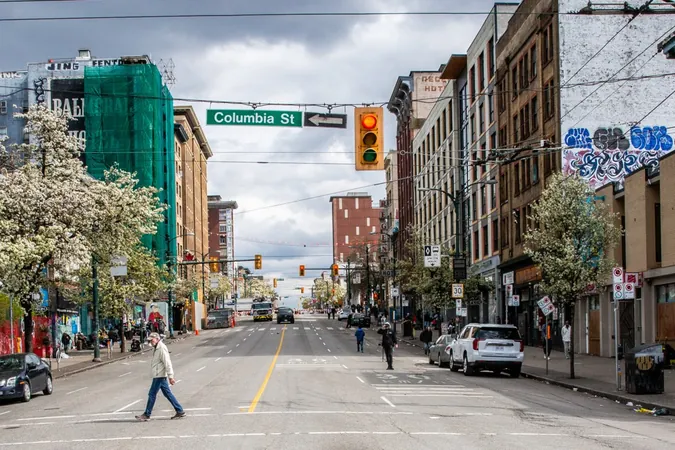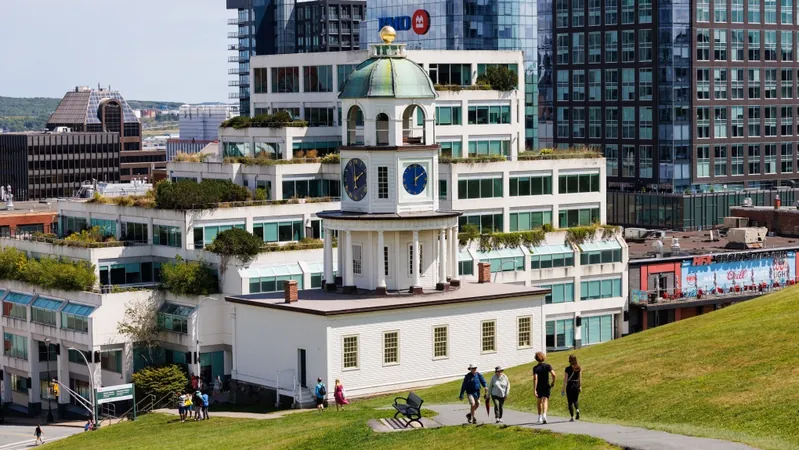
Are You Ready for a 7.2-Magnitude Earthquake? Shocking Findings About Vancouver’s Vulnerability!
2024-11-07
Author: Jacob
Introduction
A recent report from the City of Vancouver has raised alarm bells regarding the potential impact of a 7.2-magnitude earthquake on the city. The findings are nothing short of shocking: experts estimate that such a quake could result in the deaths or serious injuries of up to 1,350 individuals, while nearly 6,100 privately owned buildings could suffer significant damage.
Key Contributors to the Report
Prepared by city planner Micah Hilt and Dr. Tiegan E. Hobbs of Natural Resources Canada, the report reveals that over one-third of Vancouver’s residents and workers may experience disruption and displacement lasting several months. The predicted financial losses from this disaster could eclipse a staggering $17 billion—a figure that makes it clear how devastating this event could be.
Analysis Methodology
The analysis utilized sophisticated modeling software that simulates the effects of a 7.2-magnitude earthquake centered in the Georgia Strait, taking into account a meticulous inventory of the buildings in the city. According to the authors, certain types of buildings pose nearly 80% of the risk for severe injuries and fatalities during such a calamity.
High-Risk Neighborhoods
The West End, Downtown Eastside (including Chinatown and Strathcona), downtown, Kitsilano, Fairview, and Mount Pleasant are identified as the neighborhoods at the highest risk. These areas reportedly account for 65% of Vancouver's overall seismic risk, housing critical employment districts and a significant number of residential rental units.
Vulnerability of Older Buildings
What's particularly alarming is the vulnerability of older buildings. Structures built before the introduction of modern seismic design requirements in 1990—and especially those erected before 1973—face the greatest danger. This is especially concerning as many of these buildings offer relatively affordable housing options. A recent survey by the Canada Mortgage and Housing Corporation found that rents for pre-1960 units are approximately 35% lower than those for newer constructions, making them essential for low-income residents.
Demographic Challenges
Census data highlights that approximately 70% of the population in high-risk neighborhoods are renters. Among this group, nearly 20% are low-income, over 10% are seniors, and 30% identify as visible minorities. These demographics undoubtedly face unique challenges in preparing for and recovering from a seismic event, potentially exacerbating their vulnerability.
Lessons from Past Earthquakes
Past earthquakes in other regions reveal a grim reality: areas with significant damage often need to be cordoned off for extended periods, a process that can significantly prolong both recovery efforts and economic impacts. Both the West End, with its older multi-unit buildings, and the Downtown Eastside, known for its unreinforced masonry structures, are particularly susceptible to such restrictions.
Obstacles to Recovery
Furthermore, key thoroughfares like Hastings Street and Kingsway may experience additional hazards from falling debris, obstructing emergency response efforts and further complicating the recovery process.
Recommendations for Action
Experts advocate for seismic risk reduction without the need for an all-encompassing approach immediately. Instead, they suggest that starting with small, strategic actions in specific high-risk areas can promote awareness and optimize funding opportunities from provincial and federal governments.
Conclusion
The urgency of the situation cannot be overstated: the sooner Vancouver implements risk reduction strategies—no matter how modest—the better prepared the city will be to safeguard its residents and facilitate long-term recovery.
Next Steps for the City Council
This crucial report will be presented to city council on November 12, and it remains to be seen how the city will act on these unprecedented warnings. Are you prepared for the next big quake? You might want to start making plans now!









 Brasil (PT)
Brasil (PT)
 Canada (EN)
Canada (EN)
 Chile (ES)
Chile (ES)
 España (ES)
España (ES)
 France (FR)
France (FR)
 Hong Kong (EN)
Hong Kong (EN)
 Italia (IT)
Italia (IT)
 日本 (JA)
日本 (JA)
 Magyarország (HU)
Magyarország (HU)
 Norge (NO)
Norge (NO)
 Polska (PL)
Polska (PL)
 Schweiz (DE)
Schweiz (DE)
 Singapore (EN)
Singapore (EN)
 Sverige (SV)
Sverige (SV)
 Suomi (FI)
Suomi (FI)
 Türkiye (TR)
Türkiye (TR)